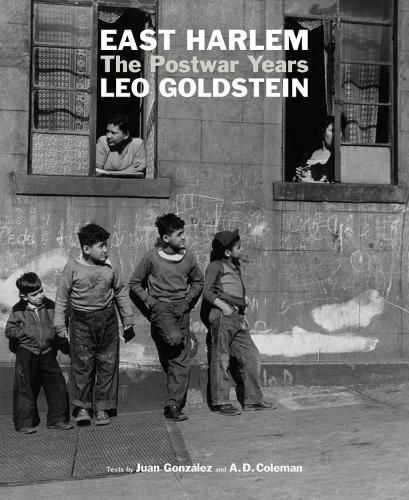Readings Newsletter
Become a Readings Member to make your shopping experience even easier.
Sign in or sign up for free!
You’re not far away from qualifying for FREE standard shipping within Australia
You’ve qualified for FREE standard shipping within Australia
The cart is loading…






For some 70 years, Leo Goldstein’s East Harlembodyof work remained mostly untouched and unseen.The silver gelatin prints were catalogued in 2016,and a selection is gathered here for the first time.The photographs were taken over a number of years,beginning in 1949 when Goldstein was a memberof the Photo League.The East Harlem corpus, edited by Regina Monfort,represents an important and unique addition to thephotographic history of New York City. Because thereare no negatives in existence, it was of particularimportance to preserve the images in book form andmake them available to the public.The selected images reflect the postwar years in theEast Harlem community, which would grow intoa center of Puerto Rican culture and life in the U.S.From the families portrayed gathering on stoops, tothe kids at their shoeshine stations, to youths playingball in the streets, to posters on neighborhood walls,Goldstein’s images of East Harlem provide a windowinto the socio-economic, cultural, and politicallandscape of the time.
$9.00 standard shipping within Australia
FREE standard shipping within Australia for orders over $100.00
Express & International shipping calculated at checkout
For some 70 years, Leo Goldstein’s East Harlembodyof work remained mostly untouched and unseen.The silver gelatin prints were catalogued in 2016,and a selection is gathered here for the first time.The photographs were taken over a number of years,beginning in 1949 when Goldstein was a memberof the Photo League.The East Harlem corpus, edited by Regina Monfort,represents an important and unique addition to thephotographic history of New York City. Because thereare no negatives in existence, it was of particularimportance to preserve the images in book form andmake them available to the public.The selected images reflect the postwar years in theEast Harlem community, which would grow intoa center of Puerto Rican culture and life in the U.S.From the families portrayed gathering on stoops, tothe kids at their shoeshine stations, to youths playingball in the streets, to posters on neighborhood walls,Goldstein’s images of East Harlem provide a windowinto the socio-economic, cultural, and politicallandscape of the time.